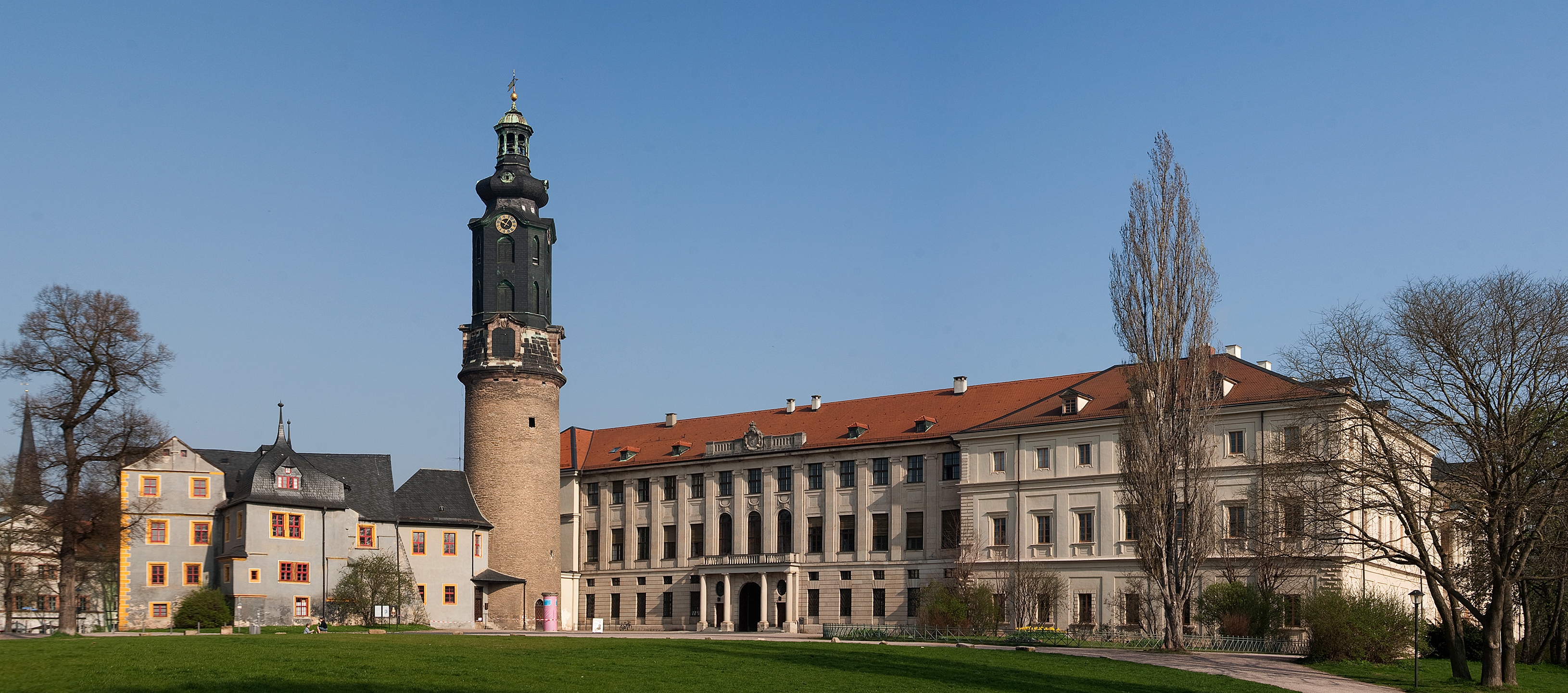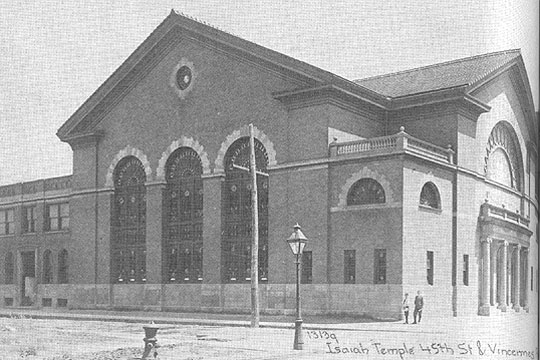|
Liebman Adler
Liebman Adler (18121892) was a prominent U.S. rabbi. Adler was born in the town of Lengsfeld in the Grand Duchy of Saxe-Weimar, Germany. After studying under many prominent Hebrew scholars, he immigrated to America in his early forties, serving as rabbi at Temple Beth El in Detroit, the oldest Jewish congregation in Michigan, before assuming the pulpit of Kehillath Anshe Maarabh ("K.A.M.") in Chicago, the oldest Jewish congregation in Illinois, in 1861. A self-styled "orthodox reformer", he served the congregation for over 20 years, delivering his sermons in German. An "avowed abolitionist", he spoke out forcefully against slavery during the American Civil War. In ''History of the Jews of Chicago'' (1924), Hyman L. Meites wrote that Adler was "one of the most beloved rabbis to be found in the country", explaining: "At last K.A.M. had a rabbi of whom it and the community could be proud, a rabbi who was a tower of strength to the congregation and the community for many years, ... [...More Info...] [...Related Items...] OR: [Wikipedia] [Google] [Baidu] |
Saxe-Weimar
Saxe-Weimar () was one of the Saxon duchies held by the Ernestine branch of the Wettin dynasty in present-day Thuringia. The chief town and capital was Weimar. The Weimar branch was the most genealogically senior extant branch of the House of Wettin. History Division of Leipzig In the late 15th century much of what is now Thuringia, including the area around Weimar, was held by the Wettin Electors of Saxony. According to the 1485 Treaty of Leipzig, the Wettin lands had been divided between Elector Ernest of Saxony and his younger brother Albert III, with the western lands in Thuringia together with the electoral dignity going to the Ernestine branch of the family. Ernest's grandson Elector John Frederick I of Saxony forfeited the electoral dignity in the 1547 Capitulation of Wittenberg, after he had joined the revolt of the Lutheran Schmalkaldic League against the Habsburg emperor Charles V, was defeated, captured and banned. Nevertheless, according to the 1552 Pe ... [...More Info...] [...Related Items...] OR: [Wikipedia] [Google] [Baidu] |
Temple Beth El (Detroit)
Temple Beth El is a Reform synagogue located at in Bloomfield Township, Oakland County, Michigan, in the United States. Beth El was founded in 1850 in the city of Detroit, and is the oldest Jewish congregation in Michigan. Temple Beth El was a founding member of the Union for Reform Judaism (originally the Union of American Hebrew Congregations) in 1873, and hosted the meeting in 1889 during which the Central Conference of American Rabbis was established. In 1982, its two former buildings in Detroit, at 3424 and 8801 Woodward Avenue, were listed on the National Register of Historic Places. Early years In 1850, Sarah and Isaac Cozens arrived in Detroit and moved into a house near the corner of Congress and St. Antoine streets. At the time, there were only 60 Jews in Detroit (out of a population of over 21,000) and no synagogues. Sarah urged her co-religionists to establish a congregation, and on September 22, 1850, twelve Jewish families came together at the Cozens's home to ... [...More Info...] [...Related Items...] OR: [Wikipedia] [Google] [Baidu] |
KAM Isaiah Israel
KAM Isaiah Israel is a Reform Jewish congregation and synagogue located at 1100 East Hyde Park Boulevard in the historic Kenwood neighborhood of Chicago, Illinois, in the United States. It is the oldest Jewish congregation in Chicago, with its oldest core founded in 1847 as Kehilath Anshe Ma'arav (). History The congregation Kehilath Anshe Ma'arav ("Congregation of the Men of the West") was founded on November 3, 1847, at the wholesale dry-goods store of Levi Rosenfeld and Jacob Rosenberg located at 155 East Lake Street by twenty men, many of whom hailed from Bavaria. At the time, this section of the Chicago Loop was the center of the small Chicago Jewish community. The newly founded congregation was first housed above Rosenfeld and Rosenberg's store at Lake and Wells street. After increasing membership and lack of space, the congregation was soon forced to find a more suitable space to accommodate their growing community. A lot was leased at Clark and Quincy streets (now the ... [...More Info...] [...Related Items...] OR: [Wikipedia] [Google] [Baidu] |
Dankmar Adler
Dankmar Adler (July 3, 1844 – April 16, 1900) was a German-born American architect and civil engineer. He is best known for his fifteen-year partnership with Louis Sullivan, during which they designed influential skyscrapers that boldly addressed their steel skeleton through their exterior design: the Wainwright Building in St. Louis, Missouri (1891), the Chicago Stock Exchange Building (1894), and the Guaranty Building in Buffalo, New York (1896). Early years Adler was born in Stadtlengsfeld, Germany; his mother, Sara Eliel, died when he was born. In 1854, he came to the United States with his father Liebman Adler, a rabbi. They took up residence in Detroit, and Liebman became the rabbi of Congregation Beth-El. Subsequently, they moved to Chicago. Adler had some elementary-level education in the City of Detroit, and Ann Arbor, before leaving school to become a draftsman. Career Adler served in the Union Army during the Civil War with Battery "M", 1st Illinois Light A ... [...More Info...] [...Related Items...] OR: [Wikipedia] [Google] [Baidu] |
American Civil War
The American Civil War (April 12, 1861May 26, 1865; also known by Names of the American Civil War, other names) was a civil war in the United States between the Union (American Civil War), Union ("the North") and the Confederate States of America, Confederacy ("the South"), which was formed in 1861 by U.S. state, states that had Secession in the United States, seceded from the Union. The Origins of the American Civil War, central conflict leading to war was a dispute over whether Slavery in the United States, slavery should be permitted to expand into the western territories, leading to more slave states, or be prohibited from doing so, which many believed would place slavery on a course of ultimate extinction. Timeline of events leading to the American Civil War, Decades of controversy over slavery came to a head when Abraham Lincoln, who opposed slavery's expansion, won the 1860 presidential election. Seven Southern slave states responded to Lincoln's victory by seceding f ... [...More Info...] [...Related Items...] OR: [Wikipedia] [Google] [Baidu] |
Moses Montefiore
Sir Moses Haim Montefiore, 1st Baronet, (24 October 1784 – 28 July 1885) was a British financier and banker, activist, Philanthropy, philanthropist and Sheriffs of the City of London, Sheriff of London. Born to an History of the Jews in Italy, Italian Sephardic Jewish family based in London, after he achieved success, he donated large sums of money to promote industry, business, economic development, education and health among the Jewish community in the Levant. He founded Mishkenot Sha'ananim in 1860, the first Jewish settlement outside the Old City of Jerusalem. As President of the Board of Deputies of British Jews, he corresponded with Charles Henry Churchill, the British consul in Damascus, in 1841–42; his contributions are seen as pivotal to the development of Proto-Zionism. Queen Victoria, Queen Victoria's chaplain, Norman Macleod (Caraid nan Gaidheal), Norman Macleod said of Montefiore: "No man living has done so much for his brethren in Palestine ... [...More Info...] [...Related Items...] OR: [Wikipedia] [Google] [Baidu] |
Central Music Hall (Chicago)
Central Music Hall (1879–1900) was a mixed-use commercial building and theater in Chicago, situated on the southeast corner of State and Randolph Streets. It was designed by celebrated German-born American architect Dankmar Adler. It was the first important building designed by the famous architect, in which he made initial use of his knowledge of acoustics. The building was demolished in 1900, around the same time Adler died, in order to build the Marshall Field & Company store, now Macy's, Inc., Macy's. History The idea for Central Music Hall was conceived by George B. Carpenter, a local promoter of concerts and lectures. Carpenter was a member of Reverend David Swing's popular nondenominational Central Church, and he imagined a building to be named in its honor that would provide a home for the church and also feature a concert hall, stores, and offices. Construction began in the Spring of 1879 and the auditorium (not yet fully complete) opened on December 5, immediately ... [...More Info...] [...Related Items...] OR: [Wikipedia] [Google] [Baidu] |




